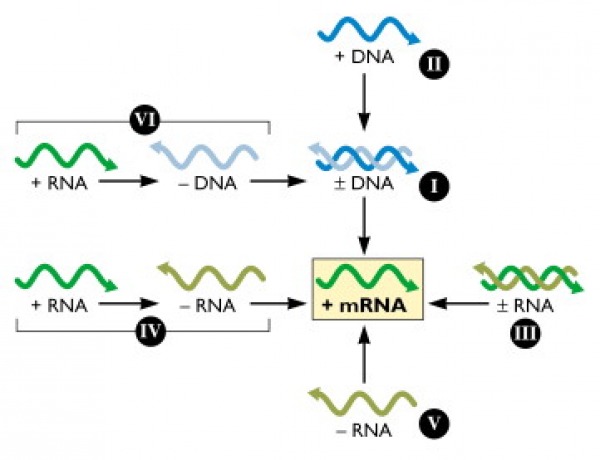Virology
Baltimore's system for classification
The Baltimore system of virus classification categorises viruses according to the various mechanisms of viral genome replication. The main concept is that all viruses must generate positive strand mRNAs from their genomes, in order to produce proteins and replicate themselves. The specific mechanisms whereby this is achieved differ for each type of virus. These various types of virus genomes can be broken down into seven different groups, which has different ways to achieve replication.
Baltimore Classification

http://www.virology.ws/wp-content/uploads/2009/08/baltimore-classification.jpg
According to Baltimore classification, viruses are divided into the following seven classes:
Class I : Double stranded DNA viruses
Class II : Single stranded DNA viruses
Class III : Double stranded RNA viruses
Class IV : (+) Sense Single stranded RNA viruses
Class V : (-) Sense Single stranded RNA viruses
Class VI : RNA Reverse transcribing viruses
Class VII : DNA Reverse transcribing viruses
Class II : Single stranded DNA viruses
Class III : Double stranded RNA viruses
Class IV : (+) Sense Single stranded RNA viruses
Class V : (-) Sense Single stranded RNA viruses
Class VI : RNA Reverse transcribing viruses
Class VII : DNA Reverse transcribing viruses
